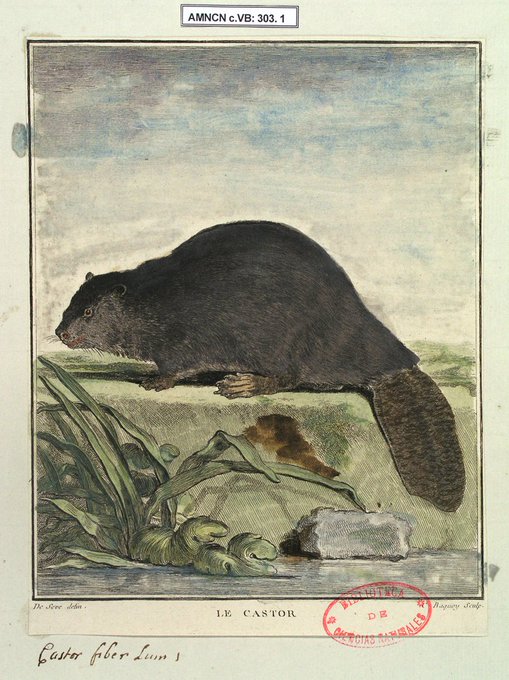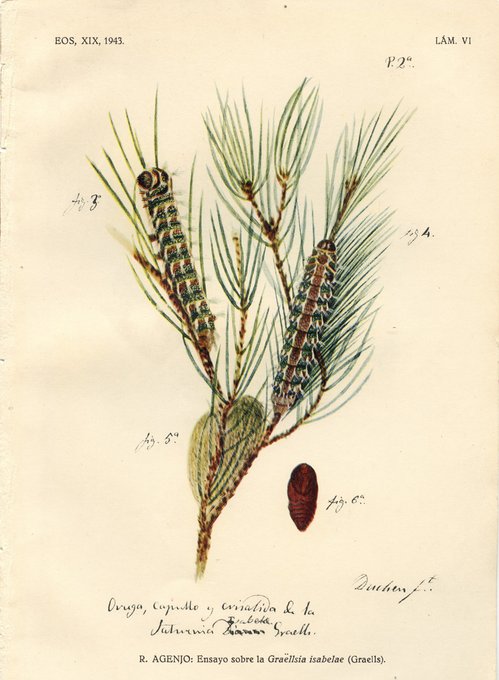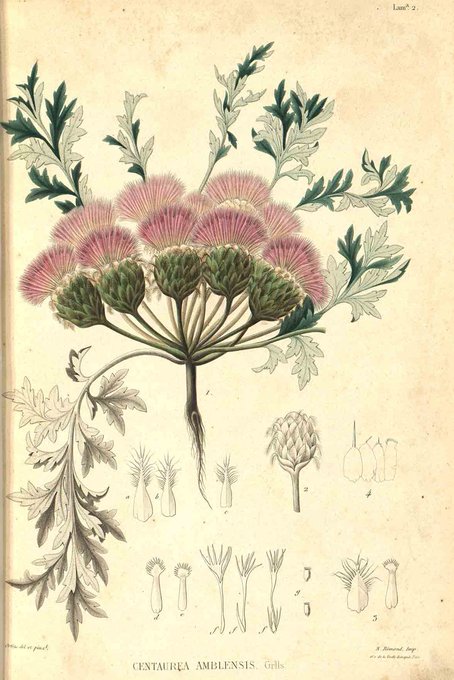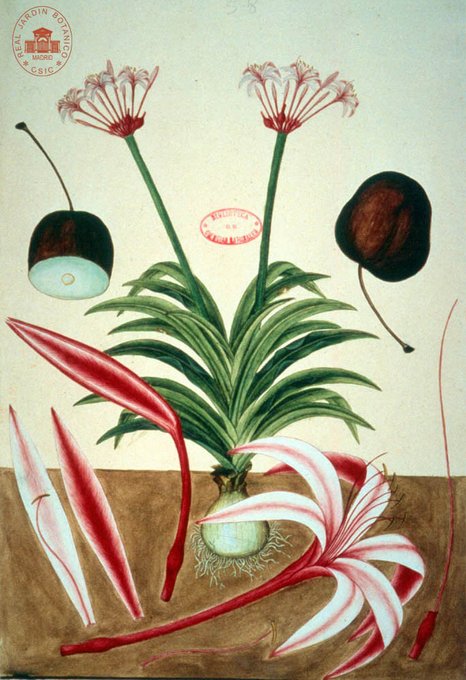#MammalMonday The spectral bat (Vampyrum spectrum) is the largest chiropter in the New World. This drawing is from the Royal Botanical Expedition to New Spain (1787-1803), one of the most ambitious scientific expeditions in #18thCentury. #Archives #SciArt #Mammals #Bats #NatHist
Orthoptera metamorphosis, illuminated intaglio by Johannes Augustin Rösel von Rosenhof (1705-1759). He was an important figure in modern entomology. #VanBerkheij collection #Archives #Zoology #Insects #Orthoptera #18thCentury #SciArt #ScientificIllustration #NatHist #Museums
The MNCN preserves one of the best collections of the Spanish moon moth (Graellsia isabellae), described in 1849 by #Graells. For more than a century it was a piece coveted by scientists and collectors, who did not hesitate to travel to Spain to try to capture it. #Butterflies
#WorldDogDay Dog breeds from #VanBerkhey collection. #Mammals #Dogs #Archives #SciArt #ScientificIllustration #18thCentury #DiaMundialDelPerro
#BotanicMonday Centaurea amblensis was described by Graells in 1859. It differs well from other centaureas for its numerous flowers pink, which in the other species are scarce and yellow. The drawing of the species was made by #Graells, a former director of #MNCN. #Botany #SciArt
Happy #WorldOceansDay! We want clean oceans and full of life. Enjoy these scenes from the painting #QuadroPeru (1799) #SciArt #NatHist #SeaLife #MarineBiodiversity #Museums #DíaMundialdelosOcéanos
#MolluscMonday The candy cane snail (Liguus virgineus) is a mollusc endemic to the Caribbean island of La Española (Haiti and the Dominican Republic). The first illustration of this arboreal snail was published in 1684 in “Recreatio Mentis et Oculi” by Filippo Bonanni. #SciArt
The study of atlases of several Neanderthals of Krapina (Croatia) suggests high prevalence of anatomical variations in the first cervical vertebra of #Neanderthals. It supports the theory that genetic diversity was very low, what could be one of the causes of its #extinction.
#BotanicMonday Tulipa javana Rumph "Juan de Cuéllar's expedition to the Philippines" (1786-1794); botanical determination: Crinum amabile. #Botany #18thcentury #Archives #ScientificIllustration #SciArt #NatHist #Museums @RJBOTANICO






















